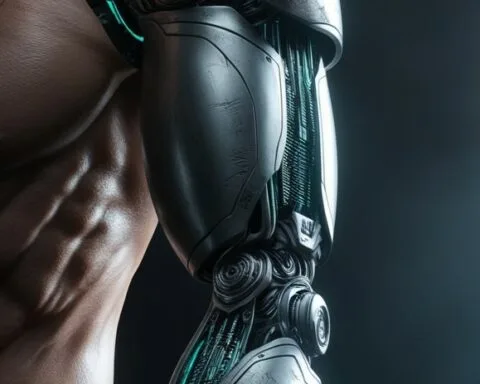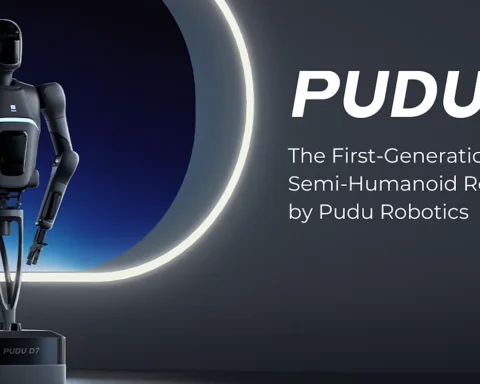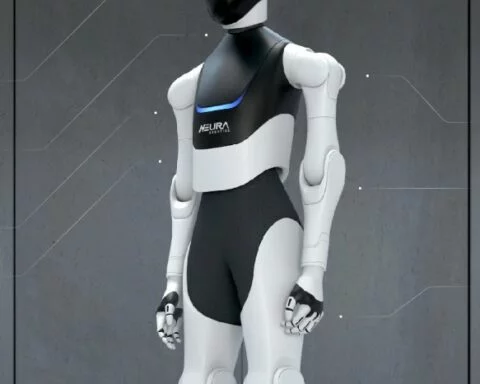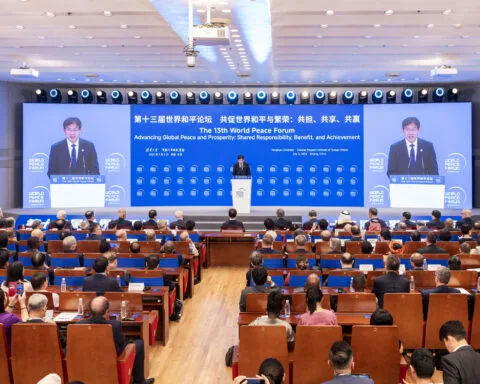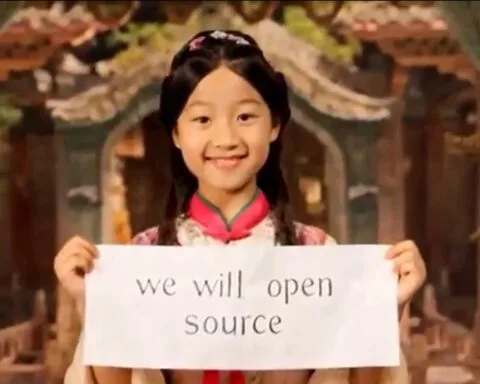Last Updated on January 23, 2024 4:03 pm by Laszlo Szabo / NowadAIs | Published on January 23, 2024 by Laszlo Szabo / NowadAIs
Key Takeaways for AI Robot Designs: Overview of Artificial Intelligence Robotics 2024
- AI-powered robotics are revolutionizing businesses by increasing efficiency and productivity through reactive machines, limited memory, theory of mind, and self-awareness.
- From manufacturing to space exploration, the use of AI and robotics in various industries is changing demands and personalizing information through the use of sensors, vision devices, and human speech recognition.
- While AI robotics offer benefits such as increased efficiency and cost savings, ethical concerns such as job displacement and potential misuse should also be considered as these technologies continue to advance and become more human-like.
Introduction – AI and Robotics
Welcome to the world of AI robotics, where innovation and technology have merged to create intelligent machines that can perform tasks with precision and efficiency. As our world becomes more dependent on technology, it’s crucial to understand the benefits and potential concerns surrounding AI robotics.
Are you curious about the impact of these advancements on our society?
Let’s delve into the exciting and complex world of AI robotics.
Reactive Machines Equipped with Sensors
Reactive machines are a major breakthrough in the field of Artificial Intelligence, transforming business operations with the help of AI-powered robots. These robots have the ability to react to their surroundings in real-time, without the need for prior knowledge or explicit programming. Equipped with advanced sensors and algorithms, they are capable of navigating complex environments, efficiently completing tasks, and adapting to changing situations. This technology has revolutionized industries such as manufacturing, logistics, and healthcare, enhancing productivity, precision, and safety. AI-powered robots have become crucial assets for businesses looking to streamline operations and foster innovation.
Limited Memory of Robots and Artificial Intelligence
Limited memory is a crucial aspect of AI robotics that allows machines to store and retrieve information. Here are the key steps in understanding limited memory:
- Definition: Limited memory refers to a system’s ability to retain a limited amount of information temporarily.
- Importance: Limited memory enables robots to adapt to changing demands by recalling past experiences and using them to make informed decisions.
- Applications: In science fiction, limited memory is often portrayed as the reason behind robots developing personalities and learning from personalized information.
- Storage and retrieval: Robots use algorithms and data structures to efficiently store and retrieve information from their limited memory.
- Optimization: Developers aim to optimize limited memory systems to maximize performance and enhance the robot’s ability to learn and adapt in real-time.
Theory of Mind – On the Way to Humanoid Robots
Theory of Mind is a crucial aspect of AI robotics, enabling machines to understand and predict human behavior. It allows robots to navigate complex social interactions in various environments, such as farm fields, coffee shops, industrial settings, and shared spaces.
By developing a Theory of Mind, robots can interpret human intelligence – intentions, emotions, and beliefs, leading to more efficient and effective collaboration. This capability is essential for robots to seamlessly integrate into human-centric environments, enhancing productivity and safety in diverse settings.
Robotic Self-Awareness
Self-awareness is another important aspect of AI robotics. By incorporating complex tasks and advanced vision devices such as 2D/3D cameras, AI robots can perceive their surroundings and understand their own presence.
They rely on vibration sensors, proximity sensors, and environmental sensors to gather data and adapt their behavior accordingly. These technologies enable robots to navigate through dynamic environments, avoid obstacles, and interact with humans in a more intuitive way.
For instance, a true story involves an AI robot that used its self-awareness to detect a hazardous leak in a factory and promptly shut down the machinery, preventing a potential disaster.
Now let’s dive how Artificial Intelligence transforms our everyday life.
Future of AI Driven Manufacturing
Is being transformed by AI robotics, which provide enhanced efficiency, precision, and cost-effectiveness.
Through the use of lidar sensors, robots are able to accurately perceive their surroundings, ensuring safe and effective operations. AI algorithms analyze data to determine the most efficient path for robots, reducing travel time and maximizing productivity. With the ability to work tirelessly without breaks or fatigue, task completion is accelerated.
Areas neural networks guide and support human experience:
- Predictive Maintenance: AI algorithms are used in manufacturing to predict equipment failures before they happen. By analyzing data from sensors and machine learning, AI can identify patterns indicating potential breakdowns, leading to timely maintenance and reducing downtime.
- Quality Control: AI-driven visual inspection systems are employed to detect defects and inconsistencies in products. These systems use high-resolution cameras and deep learning algorithms to identify even minute flaws, ensuring higher product quality and reducing human error.
- Supply Chain Optimization: AI is used to optimize supply chain management by predicting demand, managing inventory levels, and identifying the most efficient transportation routes. It analyzes large datasets to forecast trends and optimize logistics, resulting in cost savings and improved efficiency.
- Robotics and Automation: In manufacturing, AI-powered robots are used for tasks such as assembly, packaging, and material handling. These robots can learn and adapt to different tasks, increasing productivity and allowing for more complex and precise operations.
- Customization and Design: AI is increasingly used in the design phase of manufacturing, particularly for custom products. Using AI algorithms, manufacturers can quickly analyze customer preferences and feedback to design personalized products. AI also aids in simulating and testing new product designs, speeding up the development process.
In a real-life example, a manufacturing company implemented AI robotics and saw a 50% reduction in production time, resulting in higher product quality, increased customer satisfaction, and business growth.
AI in Human Healthcare
Artificial Intelligence (AI) robotics in the healthcare industry by utilizing articulated robots and robotic arms equipped with advanced vision sensors.
These robots have the ability to understand scenes and classify objects, making them invaluable in healthcare settings. They can assist in surgeries, accurately perform delicate procedures, and enhance patient care.
For example, robotic arms can be used for precise movements during surgeries, reducing the risk of human error. Vision sensors allow these robots to navigate environments and perform tasks with greater precision.
Healthcare areas Artificial Intelligence helps us:
- Diagnostic Assistance: AI algorithms are increasingly being used to assist in diagnosing diseases from medical imaging. For example, AI can analyze X-rays, MRIs, and CT scans to detect anomalies like tumors, fractures, or diseases like pneumonia more quickly and accurately than human radiologists.
- Personalized Medicine: AI is enabling more personalized medicine approaches. It can analyze data from a patient’s genetic makeup, lifestyle, and environment to recommend personalized treatment plans. This approach is particularly effective in cancer treatment, where AI can help identify the most effective medication combinations for individual patients based on their genetic profiles.
- Predictive Analytics for Patient Monitoring: AI tools are used in hospitals and healthcare settings for predictive analytics. They can analyze real-time data from patients, such as vital signs and laboratory test results, to predict and prevent potential health issues before they become severe. This is especially useful in critical care and chronic disease management.
- Drug Discovery and Development: AI accelerates the drug discovery process by analyzing vast datasets to identify potential drug candidates. It can also predict how different drugs will interact with various biological targets, reducing the time and cost of developing new medications.

Robotic Surgery and Rehabilitation – A robotic arm with precise, delicate mechanisms is assisting a team of doctors during a complex surgery - Robotic Surgery and Rehabilitation: AI-driven robots assist surgeons in performing precise surgical procedures, often minimally invasive, leading to faster patient recovery. In rehabilitation, AI-powered robotic devices and exoskeletons are used to help patients with mobility issues or those recovering from injuries and surgeries to regain their movement more effectively.
AI-powered robotics is transforming healthcare by improving efficiency, accuracy, and patient outcomes.
Machine Learning in Agriculture
AI robotics is one of the industries that has greatly benefited from AI robotics.
These advanced machines are capable of performing a variety of tasks, such as planting, harvesting, and monitoring crop health. With features like human speech recognition, they can even communicate with workers. Through worker-assisted training, AI robots continuously learn and improve their performance.
They are utilized in a range of industries, including agriculture, and have proven to be highly efficient in increasing productivity and reducing labor costs.
Artificial Intelligence (AI) is increasingly being applied in agriculture, offering innovative solutions for improving efficiency and productivity. Here are five real-world examples:
- Precision Farming: AI algorithms analyze data from satellite images and sensors on the ground to optimize planting patterns and crop management. This technology assists in determining the best planting times, soil management, and crop rotation strategies, ultimately leading to increased yields and reduced environmental impact.
- Disease and Pest Detection: AI-powered image recognition tools are used to monitor crops for signs of diseases, pests, and nutritional deficiencies. Cameras mounted on drones or tractors capture images of the crops, which are then analyzed by AI to detect problems early on, enabling timely intervention.
- Automated Weed Control: AI-guided robots equipped with cameras and sensors can identify weeds among crops and selectively apply herbicides or mechanically remove the weeds. This targeted approach reduces herbicide usage, lowering costs and environmental impact.
- Yield Prediction and Crop Monitoring: AI algorithms process data from various sources, such as weather patterns, soil conditions, and historical yield data, to predict crop yields more accurately. This helps farmers in planning and resource management, ensuring better market prices and reducing waste.
- Livestock Management: AI is used to monitor the health and well-being of livestock. Sensors collect data on animal activity, health indicators, and environmental conditions. AI analyzes this data to identify sick animals early, optimize feeding, and improve overall herd management, leading to healthier livestock and increased efficiency in animal farming.
These applications demonstrate how AI is revolutionizing agriculture, making it more efficient, sustainable, and productive.
Neural Networks and Space Exploration
Space exploration utilizing AI robotics requires careful planning and execution to ensure successful missions. Here are the steps involved in incorporating AI robotics into existing space exploration operations:
- Evaluate existing operation: Assess current space exploration processes, identifying areas where AI robotics can enhance efficiency and effectiveness.
- Define objectives: Set clear goals for incorporating AI robotics, such as improving data collection, automating tasks, or reducing human risk.
- Research and development: Invest in researching and developing AI technologies tailored to space exploration needs.
- Integration planning: Determine how AI robotics will be integrated into existing systems, considering compatibility and communication protocols.
- Training and testing: Train astronauts and mission controllers on operating AI robotics systems and conduct rigorous testing to ensure proper functioning.
- Implementation: Gradually introduce AI robotics into space missions, starting with less critical tasks and progressively expanding their role.
- Evaluate and optimize: Continuously monitor and evaluate the performance of AI robotics, making adjustments to improve efficiency and address any challenges.
- Evolve the business model: Adapt the business model to leverage the benefits of AI robotics, potentially including partnerships or new revenue streams.
AI-Powered Efficiency and Productivity Leaded by Massachusetts Institute of Technology
Increased efficiency and productivity are key benefits of incorporating AI robotics in various industries. Here are some ways in which AI systems can enhance efficiency:
- Supply Chain Optimization: AI is widely used for enhancing supply chain efficiency. By analyzing vast amounts of data, AI algorithms can predict supply needs, optimize inventory levels, and anticipate potential disruptions. This helps in reducing waste, improving delivery times, and lowering costs. For instance, companies like Amazon use AI to forecast demand, optimize routes, and automate warehousing operations.
- Predictive Maintenance in Manufacturing: In manufacturing industries, AI-driven predictive maintenance can anticipate equipment failures before they occur. By continuously monitoring equipment data, AI can detect patterns that precede a malfunction, allowing for timely maintenance, which significantly reduces downtime and increases productivity. Companies like Siemens and General Electric use AI for this purpose, enhancing the efficiency of their manufacturing processes.
- Healthcare Diagnostics and Treatment Plans: AI algorithms assist healthcare professionals by providing more accurate diagnostics and personalized treatment plans. These systems analyze medical records, imaging data, and genetic information to help doctors make faster, more informed decisions, ultimately leading to improved patient outcomes and more efficient healthcare service delivery.
- Energy Management: AI is used in optimizing energy usage in various sectors, including residential, commercial, and industrial spaces. Smart grids, powered by AI, can balance energy supply and demand more efficiently. They can predict peak times and adjust the energy distribution accordingly, leading to significant cost savings and reduced environmental impact.
- Customer Service Automation: AI chatbots and virtual assistants are revolutionizing customer service by providing quick, 24/7 support to customers. They can handle a large volume of queries simultaneously, reducing wait times and improving customer satisfaction. Companies like Zendesk and Salesforce offer AI-powered customer service solutions that automate responses, route queries to the appropriate department, and even provide predictive solutions based on customer history.
AI systems developed by institutions like the Massachusetts Institute of Technology are constantly evolving, ensuring cutting-edge technology and continued improvement
AI Robotics in Cost Savings
Cost savings is a significant benefit of implementing AI robotics in various industries. Robots like those developed at the University of Science and Technology can perform tasks with human-like intelligence, reducing labor costs and increasing efficiency.
Advanced robotics technology allows for automation of repetitive and mundane tasks, freeing up human workers to focus on more complex and creative tasks.
Companies across sectors, from manufacturing to healthcare, have seen substantial cost reductions by utilizing AI robotics solutions in key areas:
- Predictive Maintenance in Manufacturing: AI algorithms can analyze data from equipment sensors to predict failures before they happen. This preemptive approach to maintenance helps manufacturers reduce downtime, save on repair costs, and extend the life of machinery.
- Energy Management in Buildings: AI can optimize heating, ventilation, and air conditioning (HVAC) systems in large buildings or industrial settings. By analyzing patterns in energy use and external weather data, AI systems can adjust settings in real-time for maximum efficiency, leading to significant cost savings in energy bills.
- Supply Chain Optimization: AI can streamline supply chain processes by predicting inventory needs, optimizing delivery routes, and managing supplier relationships. This reduces waste, lowers storage costs, and minimizes transportation expenses, contributing to overall cost savings.
- Automated Customer Service: AI-powered chatbots and virtual assistants can handle a large volume of customer inquiries without human intervention. This reduces the need for a large customer service team, cuts down on response times, and improves customer satisfaction, all while saving costs on personnel.
- Fraud Detection in Finance: AI algorithms can analyze transaction patterns to identify and prevent fraudulent activities in banking and finance. This proactive approach reduces the financial losses associated with fraud and improves the security of transactions, leading to cost savings for financial institutions.
In fact, the automotive industry has a true history of cost savings thanks to the use of robots in assembly lines, which has significantly reduced production costs over the years.
Improved Safety
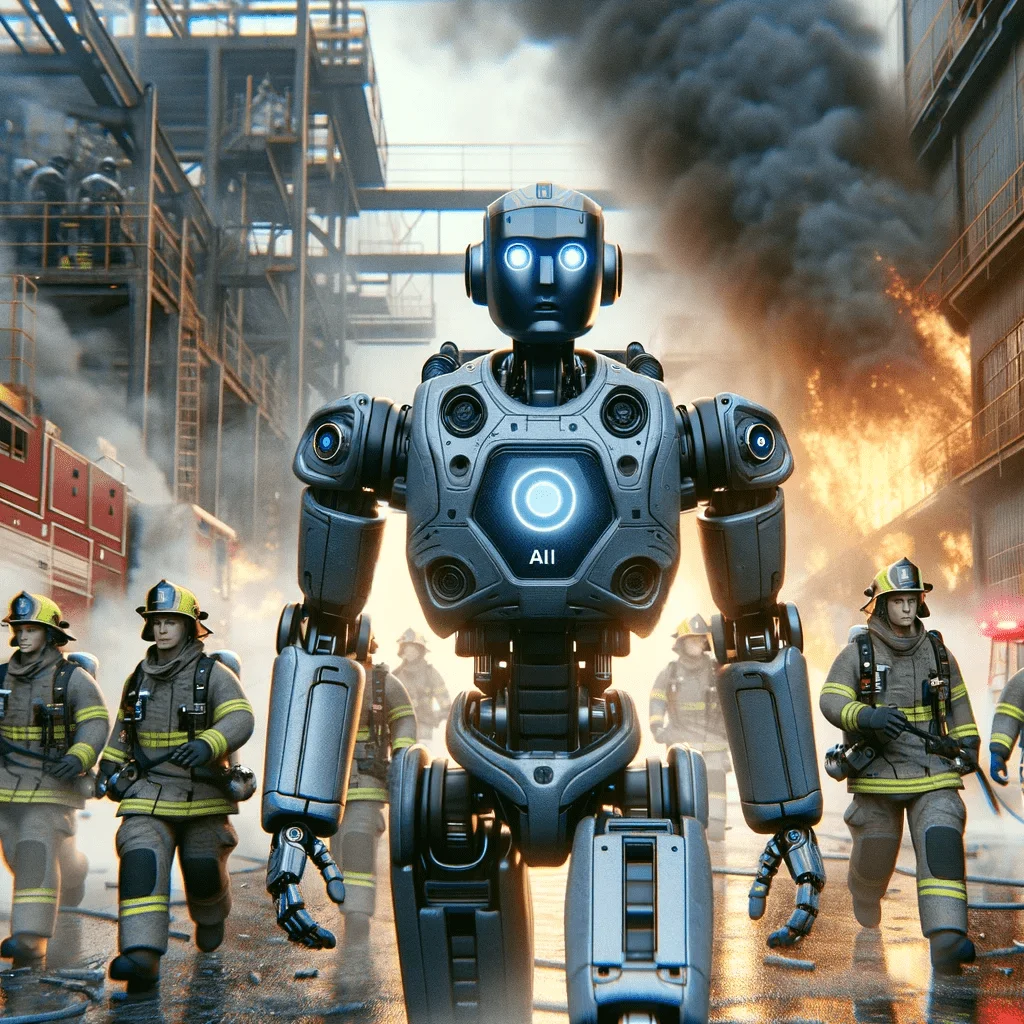
Improved safety is a crucial aspect of AI robotics. With advancements in technology, robots can now interact with humans and perform tasks that were previously hazardous.
For example, the first robot that utilizes AI to assist in surgeries reduces the risk of human error and improves patient outcomes.
- Autonomous Vehicles: AI in autonomous vehicles enhances road safety by reducing human error, which is a major cause of accidents. These vehicles use AI algorithms to process data from sensors and cameras to navigate safely, recognize traffic patterns, and respond to dynamic road conditions.
- Healthcare Diagnostics: AI-driven diagnostic tools improve patient safety by providing more accurate and timely diagnoses. For example, AI algorithms can analyze medical images like X-rays or MRIs more quickly and accurately than traditional methods, leading to early detection of diseases like cancer, and reducing diagnostic errors.
- Workplace Safety: In industrial settings, AI is used to monitor workplace environments to identify potential hazards. For instance, AI-powered surveillance systems can detect when workers are not using proper safety gear or are in unsafe areas, thereby preventing accidents and improving overall safety.
- Natural Disaster Prediction and Response: AI is increasingly used in predicting natural disasters such as earthquakes, hurricanes, or floods. By analyzing large datasets, AI can identify patterns that precede these events, enabling earlier warnings and more efficient emergency response, thus saving lives and reducing damage.
- Cybersecurity: AI enhances online safety by identifying and neutralizing cyber threats faster than traditional methods. AI systems can analyze patterns in data traffic to detect anomalies that may indicate a cyber attack, such as phishing, malware, or network breaches, thereby protecting sensitive data and preventing disruptions.
As a pro-tip, it is important to regularly update and maintain the safety protocols and systems of AI robotics, including those that involve robot uses, to ensure continued safe operation.
New AI Powered Job Displacement
Job displacement is a growing concern as advanced AI and robotics continue to evolve.
With the development of AI-powered machines that are becoming increasingly human-like in their capabilities, many tasks previously performed by humans are now being automated. This rapid advancement in AI research has the potential to significantly impact various industries, including manufacturing and customer service.
Here are some real-world examples of AI-powered job displacements:
- Ongoing Job Displacement: Approximately 14% of workers report having already lost their jobs to automation and AI technologies.
- Immediate AI Job Impact: In May 2023, about 3,900 job losses in the United States were directly attributed to AI implementations.
- Corporate AI Workforce Plan: British Telecom has announced a plan to replace 10,000 staff members with AI and automation technologies within the next seven years.
- Historical Wage Impact: Since the early introduction of AI and automation technologies in 1980, wages in certain sectors have been driven down by up to 70%, reflecting the economic impact of these technologies on the workforce.
- AI in Manufacturing: In the manufacturing sector, AI and robotic systems have increasingly been used to automate assembly lines, leading to significant reductions in the need for manual labor, especially in repetitive and precision tasks.
While this technology offers benefits such as increased efficiency and productivity, it also raises questions about the future of work and the importance of retraining and reskilling to adapt to these changes.
Ethical Issues of Robotics and Artificial Intelligence
Ethical issues surrounding AI robotics are of great concern.
As human-like robots become more prevalent in shared spaces, questions arise about privacy, consent, and accountability. For example, should robots be programmed to prioritize human safety at all costs, potentially causing harm to themselves? A
dditionally, the use of AI in complex tasks like autonomous vehicles raises questions about liability in case of accidents. Balancing technological advancements with ethical considerations is crucial for a harmonious integration of AI robotics into society.
In 2017, a human-like robot named Sophia became the first robot to be granted citizenship by Saudi Arabia.
This decision sparked debates about the rights and responsibilities of robots in society and highlighted the ethical challenges of integrating AI robotics into our daily lives.
Potential for Misuse
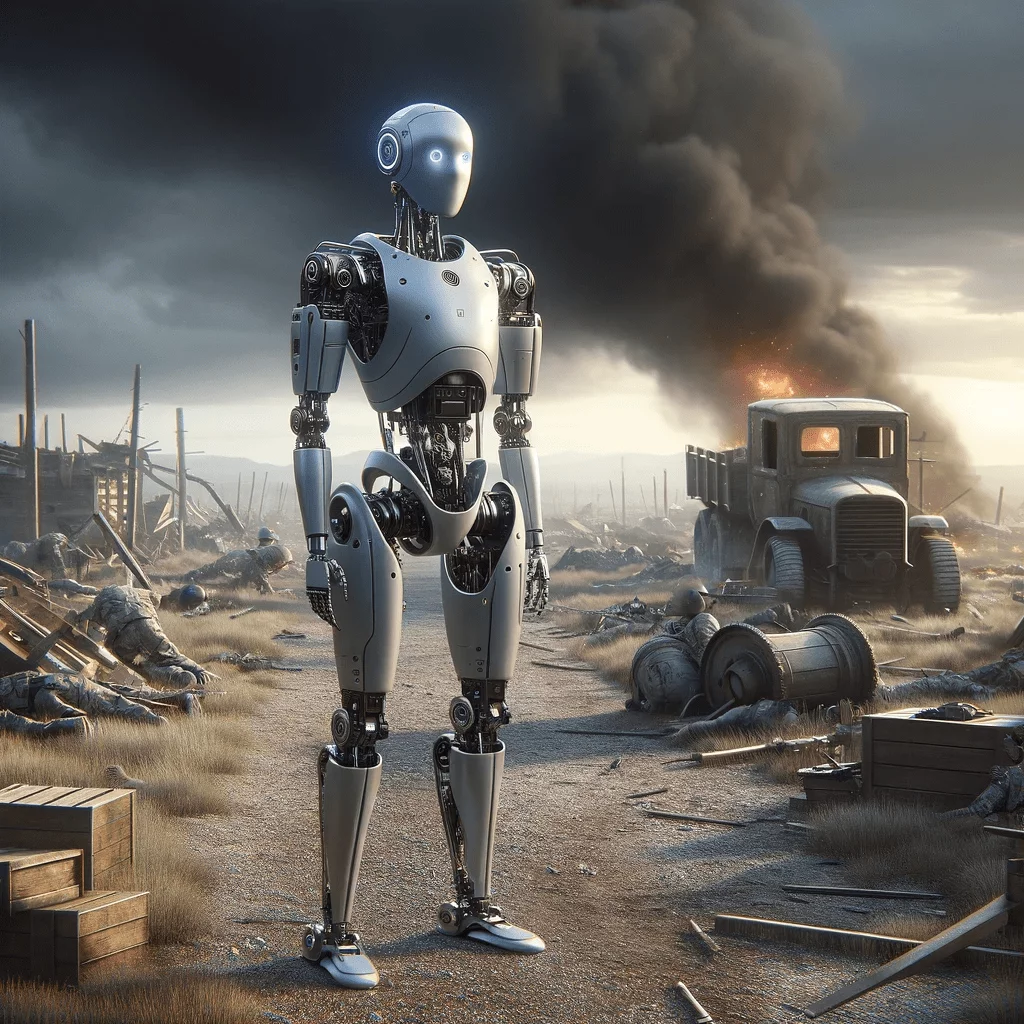
With the rapid advancement of AI robotics, there is a growing concern about the potential for misuse. Little robots with new AI capabilities can be exploited for malicious purposes. Unauthorized access, data breaches, and even physical harm are possible outcomes if these ai-powered robots fall into the wrong hands.
History provides us with a cautionary tale in the form of the Stuxnet virus. Developed as a cyber weapon, it targeted industrial control systems, causing significant damage.
This serves as a reminder of the importance of robust security measures and responsible use of AI robotics.
FAQs about AI Robotics
What is the connection between AI and Robotics?
AI, or Artificial Intelligence, is a broad class of systems that enable machines to mimic advanced human capabilities. When combined with robotics, which involves the design, construction, and operation of robots, AI can create intelligent robots that can perform complex tasks and make decisions based on their environment.
How do AI-powered robots work?
AI-powered robots are equipped with a variety of sensors, such as 2D/3D cameras, vibration sensors, and proximity sensors, that gather data about their surroundings. This data is then analyzed in real-time by the robot’s AI, which allows it to make informed decisions and carry out tasks autonomously.
What are some examples of AI-powered robots?
There are several types of AI-powered robots, including Autonomous Mobile Robots (AMRs), articulated robots, and cobots. Some examples of these robots in action include AMRs navigating through warehouses to complete inventory tasks and cobots responding to human speech and gestures in a manufacturing environment.
How does AI benefit businesses that use robotics?
Integrating AI with robotics can bring numerous benefits to businesses. These include increased productivity and efficiency, improved quality and accuracy in tasks, and enhanced worker safety. AI-powered robots can also free human workers from repetitive or physically taxing tasks, allowing them to focus on higher-level work.
What role does machine learning play in AI-powered robots?
Machine learning is a crucial component of AI-powered robots. This technology allows the robot to continuously learn and improve its capabilities by analyzing real-time data and experiences. This enables the robot to solve new problems and adapt to its environment as needed.
How is Intel involved in the development of AI-powered robots?
Intel offers a range of technologies, including hardware and software, that are essential for creating intelligent robots. Their processors and AI software are purpose-built for robotics applications, and their global partner ecosystem provides foundational building blocks for robot builders. This includes the first robot innovation ambassador, Sophia, created by Hanson Robotics in collaboration with Intel and the Massachusetts Institute of Technology.



